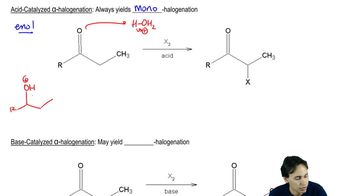In Chapter 13, we discuss the ring-opening reactions of epoxides, such as the one shown here.
(a) Based on the bonds formed and the bonds broken, calculate ∆H°.

 Verified step by step guidance
Verified step by step guidance Verified video answer for a similar problem:
Verified video answer for a similar problem:



 4:34m
4:34mMaster Acid-Catalyzed Epoxide Ring-Opening with a bite sized video explanation from Johnny
Start learning